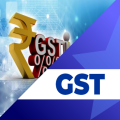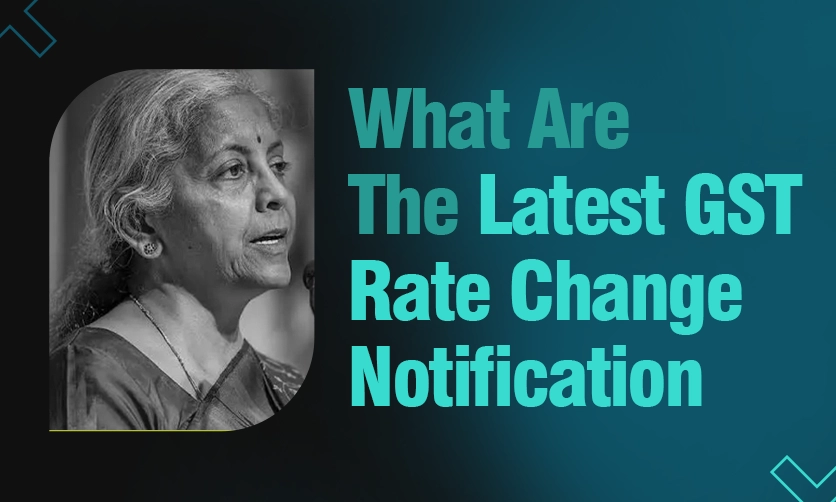
GST Composition Scheme: Rules, Turnover Limit, Rate,and Benefits
The GST composition scheme is one of the simplest and easiest GST schemes for taxpayers. Due to this scheme, small taxpayers can get relief from paying tedious GST formalities to pay all the GST at a fixed rate turnover.
This scheme is opted for those who have an annual turnover of less than Rs 1.5 crore. You can make use of the GST search tool to understand whether the taxpayer has opted for the composition scheme or not. Initially, it was 1 crore now the threshold limit extended to Rs 1.5 crore.
GST composition scheme can assist you in seeking tax benefits from the government if you are a small business owner. In this article, you will get to know about the composition schemes that can help you later on.
Table of Contents
- What Is The Meaning Of GST Composition Scheme?
- Benefits Of The GST Composition Scheme
- What Are The Conditions For Availing Composition Schemes?
- How Should A GST Composition Dealer Raise Bill?
- How Should GST Payment Be Made By A Composition Dealer
- What Is The Nature Of The Composition Scheme?
- GST Composition Scheme – Applicable GST Rates
- GST Composition Scheme Turnover Limit
- GST Composition Scheme Bill Format
- Important Parts Of Composition GST Bill Format
- GST Composition Scheme Eligibility
- Who Are Not Eligible For Composition Scheme?
- Composition Scheme Annual Return Due Date
- Composition Scheme For Your Service Provider
- Features Of GST Composition Scheme For Service Providers
- GST Composition Scheme For Restaurant
- Key Features Of The GST Composition Scheme For Restaurants
- How To Opt For The GST Composition Scheme?
- How Can You Check The GST-Composition Scheme?
- Important Forms Under GST Composition Scheme
- Validity Of Composition Scheme
- What Are The Disadvantages Of GST Composition Scheme?
- What Are The Compliances From ITC Reversal Point Of View That Need To Be Made By A Person Opting For Composition Levy?
- Final Take Away
What Is The Meaning Of GST Composition Scheme?
The GST Composition Scheme is basically a simplified form of tax scheme under the Goods and Services Tax (GST) regime in India, designed for small taxpayers to reduce their compliance burden. It allows eligible businesses with an annual turnover below a specified threshold (currently up to ₹1.5 crore for most businesses, or ₹75 lakhs for businesses in certain states) to pay GST at a fixed, lower rate on their turnover, instead of the standard GST rates applicable to their goods or services.
Benefits Of The GST Composition Scheme
There are several benefits of the GST Composition scheme that many small business owners are not well aware of. Some of its key benefits that you must be well aware of are as follows:-
1. Lower Tax Liability
In most of the cases, businesses pay off the GST at a fixed or reduced rate. Traders have to pay 1% GST, manufacturers have to pay 2% and restaurants have to pay 5% of the GST. These are all based on your turnover.
Now, as the standard GST rates can go as high as 28% in some goods and services so, the GST composition scheme can safeguard small business owners from this tax burden. As it lowers the overall tax burden of the small business owners who suffer from slim profit margins.
2. Simplified Compliances
Taxpayers file only one return per quarter (GSTR-4) instead of multiple monthly returns (like GSTR-1, and GSTR-3B under the regular scheme). This reduces the time, effort, and cost spent on tax-related paperwork and compliance.
The compliance maintenance in this case is quite less. So, you can make use of this GST composition scheme to make things happen in your favor. Without proper knowledge of the scheme, things can turn worse for you.
3. Minimal Record Keeping
Businesses are not required to maintain detailed records of input tax credit (ITC) or track every transaction as rigorously as regular GST taxpayers. Additionally, it is essential to make the process of transaction worth rigorously.
This is a significant relief for small businesses that may lack the resources or expertise for complex accounting. It reduces the need for a huge amount of paperwork to get things done on time.
4. Quarterly Tax Payment
Tax is paid quarterly rather than monthly, improving cash flow management for small businesses with limited working capital. It provides more flexibility in handling finances compared to the regular GST regime.
It is one of the crucial facts that can assist you in making the quarterly payment to be done on the right time. So, the GST composition scheme can make things happen perfectly well in your way within a shorter time.
5. Cost Savings
With reduced compliance requirements, businesses can save on expenses related to hiring accountants or GST professionals. The simplified structure eliminates the need for sophisticated tax software or extensive training.
Thus businesses can avail the long-term benefits from it. This is why you must seek the assistance of this GST composition scheme to run your business smoothly without taking too much financial burden.

What Are The Conditions For Availing Composition Schemes?
You need to meet these conditions to avail the benefits of this scheme. Now, let’s explore those conditions to make things work perfectly well for you.
- No input tax can be claimed by the dealer for those who opt for the composition scheme.
- The dealer cannot supply all the goods that are not taxable under the form of GST as alcohol.
- In most cases, the taxpayer can pay the tax at normal rates of the transaction using the concept of reverse charge mechanism.
- If the taxable person is comprised of different segments of business such as textiles, electronic accessories, and groceries then under the same PAN they can register. All such businesses are under the same collectivity and can easily opt out of your scheme.
- The taxpayer has to clarify the words composition taxable person on each and every bill supply issued by him.
- As per the amendment of CGST Act 2018, a manufacturer or trader can now also supply services to an extent of 10 percent within an annual turnover or Rs 5 lakh whichever value you consider higher. From the date of 2019, all these amendments came into action.
How Should A GST Composition Dealer Raise Bill?
A GST Composition Dealer, registered under the Composition Scheme in India, must follow specific guidelines when raising bills, as they cannot issue tax invoices like regular GST dealers. Here’s a step-by-step guide on how a GST Composition Dealer should raise a bill:
1. Issue A Bill Of Supply
- Composition dealers are not allowed to charge GST on their invoices or issue a regular GST tax invoice. Instead, they must issue a Bill of Supply.
- A Bill of Supply is a document issued when GST is not charged on the supply of goods or services.
2. Mandatory Details In The Bill Of Supply
The Bill of Supply must include the following details as per GST rules:
- Name, Address, and GSTIN: Include the dealer’s name, address, and GST Identification Number (GSTIN).
- Date of Issue: The date on which the bill is issued.
- Bill Number: A unique, consecutive serial number for the bill, not exceeding 16 characters, for each financial year.
- Recipient Details:
- Name and address of the recipient.
- If the recipient is registered under GST, include their GSTIN (optional).
- Description of Goods/Services:
- Detailed description of the goods or services supplied.
- HSN code (for goods) or SAC code (for services).
- Quantity and unit of measurement (if applicable).
- Total Value: The total value of the goods or services supplied.
- Discounts: Any discounts provided, if applicable.
- Statement on GST: A mandatory statement must be included:
“Composition taxable person, not eligible to collect tax on supplies”. - Signature: The bill must be signed by the authorized signatory or the composition dealer.
How Should GST Payment Be Made By A Composition Dealer?
Composition dealers are required to cover GST payments from their own funds for the supplies provided. The GST payment obligations for a composition dealer include:
- GST charged on supplies made.
- Tax under the reverse charge mechanism.
- Tax charged on purchase from an unregistered dealer.
*Applicable only to specific categories of goods and services, and to certain notified classes of registered persons, effective from February 1, 2019. However, this provision is not yet enforced as it awaits notification.
Few GST related topics for your knowledge
- Place Of Supply In GST: Importance, Meaning & Types
- 10 Essential Topics Covered In GST Courses
- How To File GSTR 1: Process, Deadlines & Penalties Explained
- GST Registration Process: Steps, Requirements, Status Checks, Benefits
- Structure of GST in India: Types, Rates, 4-Tiers Tax
- E-way bill in GST: Your GST Transportation Companion
What Is The Nature Of The Composition Scheme?
The nature of the composition scheme is one of the simplified tax mechanisms designed primarily for small taxpayers. It reduces the compliance burden significantly. In most of the cases, it allows all eligible businesses to pay the tax at a fixed rate. Before you seek the assistance of this GST composition scheme some detailed invoicing is required.
1. Simplified Taxation
Under this scheme, businesses pay a flat tax rate. In this scheme, the tax rate varies from 1% for traders, 2% for manufacturers, and 5% for restaurants under India’s GST scheme. These taxes these businesses have to pay on their total turnover rather than paying tax on each transaction or claiming the input tax credit.
2. Eligibility
It’s typically available to businesses with an annual turnover below a specified threshold (e.g., ₹1.5 crore in India, though this can vary). Certain businesses, like those dealing in inter-state supplies or specific goods (e.g., alcohol, tobacco), are often excluded.
3. Reduced Compliance
Businesses opting for this scheme don’t need to maintain detailed records of input and output taxes or issue tax invoices. Instead, they file simpler returns (e.g., quarterly instead of monthly) and issue a bill of supply.
4. Trade-Off
While it lowers paperwork and tax liability, the downside is that businesses cannot claim input tax credit (ITC) on purchases, and their buyers cannot claim ITC either. This can make it less attractive for businesses selling to larger firms that prefer ITC-eligible suppliers.
5. Objectives
The scheme aims to ease the tax burden on small-scale businesses, artisans, and traders, encouraging compliance while keeping administration simple for both taxpayers and tax authorities.
GST Composition Scheme – Applicable GST Rates
As per the notification dated back in 2018 turnover for traders has been defined as turnover of the taxable supply of goods.
| Types Of Business | CGST | SGST | Total |
|---|---|---|---|
| Traders and manufacturers of Goods | 0.5% | 0.5% | 1% |
| Restaurants Not Serving alcohol | 2.5% | 2.5% | 5% |
| Other Service Providers | 3.0% | 3.0% | 6% |
GST Composition Scheme Turnover Limit
The GST composition scheme turnover limit in India as of March 18, 2025, determines the eligibility of the business to opt for this scheme. This is a simplified taxation scheme under the regime of Goods and services tax.
1. For Suppliers Of Goods
- Turnover Limit: ₹1.5 crore (aggregate turnover in the preceding financial year).
- Applicable to: Manufacturers, traders, and restaurants (not serving alcohol).
- Special Category States: For states like Arunachal Pradesh, Manipur, Meghalaya, Mizoram, Nagaland, Sikkim, Tripura, and Uttarakhand, the limit is ₹75 lakh, though some states (e.g., Uttarakhand) have aligned with the ₹1.5 crore threshold over time.
2. For Service Providers & Mixed Suppliers
- Turnover Limit: ₹50 lakh (aggregate turnover in the preceding financial year).
- Applicable to: Businesses providing services or a mix of goods and services.
- Introduced: This provision came into effect on April 1, 2019, extending the scheme to service providers.
GST Composition Scheme Bill Format
GST Composition scheme bill format comprises several details that you should be well aware of. In spite of this fact, you must opt for the bill of supply. You cannot charge the GST separately in order to claim an input tax credit. Below here, you can easily maintain the composition bill Scheme. Along with it the supply format and its mandatory components are as follows.
Important Parts Of Composition GST Bill Format
- Supplier Details: Address, Name, and GSTIN of business.
- Bill Number & Date: Unique Bill Number and date of the bill.
- Customer Details: Address, Name, and GSTIN of the customers.
- Description Of Goods and Services: All the details of what is being sold.
- Quantity & Unit: How many units were sold and units used?
- Total Value: The total amount of the bill.
- Signature: Complete Signature of an authorized person.

GST Composition Scheme Eligibility
There are certain eligibility criteria you need to meet in order to avail of the GST composition scheme facilities. Some of its core eligibility schemes that you must know from your end are as follows:-
1. Turnover Limit
- For Suppliers
The aggregate turnover in the preceding financial year must not exceed ₹1.5 crore. For certain special category states in India (e.g., Arunachal Pradesh, Manipur, Meghalaya, Mizoram, Nagaland, Sikkim, Tripura), the limit is ₹75 lakh, though some states align with ₹1.5 crore.
- For Service Providers
The aggregate turnover in the preceding financial year must not exceed ₹50 lakh (applicable to service providers or mixed suppliers of goods and services under a separate composition scheme introduced in 2019).
- Aggregate Turnover Definition
Includes the total value of all taxable supplies, exempt supplies, exports, and inter-state supplies (excluding GST) under the same PAN across India.
2. Types Of Business
Some of the eligible businesses include the following that can make things work well in your favor.
- Manufacturers (except those producing specified goods like tobacco, pan masala, etc.)
- Traders (Traders who deal in goods)
- Restaurant (Restaurants that do not serve the alcohol)
- Service Providers (It is limited to 50 Lakh turnover, with an average tax rate of 6%)
3. Intrastate Supply Only
The taxpayer must engage only in intra-state supplies (within the same state). Businesses making inter-state supplies (supplying goods/services outside their state) are not eligible.
4. Not A Supplier Of Non-Taxable Goods
Businesses supplying goods or services that are exempt from GST (e.g., alcohol for human consumption, petroleum products) cannot opt for the scheme if such supplies form part of their turnover.
5. Single PAN Registration
If a person has multiple business verticals under the same PAN, all must opt for the composition scheme collectively or none can. Partial opting is not allowed.
6. No Input Tax Credit
Businesses must be willing to forgo claiming ITC on purchases, as this is a condition of the scheme. You must develop the perfect input tax credit to meet your requirements with absolute clarity.
7. New Registration Or Migration
New taxpayers registering under GST can opt for the scheme at the time of registration if they meet the turnover and other criteria.
Existing taxpayers can switch to the scheme at the beginning of a financial year by filing Form GST CMP-02 before the year starts, provided they meet eligibility conditions.
Who Are Not Eligible For Composition Scheme?
Certain persons are not eligible for the GST composition scheme. Some of the key persons that you should know here are as follows:-
- If you are a manufacturer of Pan Masala, Tobacco, and ice cream then you are not eligible for the GST composition scheme.
- A person who exempts supplies or interstate supplies is not eligible for this scheme.
- If you are not a resident taxable person or casual taxable person then you are in- eligible for this scheme.
- A person who is there offering supplying services through an e-commerce operator is required to collect TCS under section CGST section 52.
- If you are the manufacturer of certain goods and services that are strictly prohibited by the GST council, you cannot avail of the facilities of this GST composition scheme.
Composition Scheme Annual Return Due Date
The composition scheme for your annual return due date for the CMP-02 for the year 2025 -2026 is 31st March 2025. Additionally, you must stay vigilant regarding this date as if you miss this due date then you may have to face problems in the future.
Composition Scheme For Your Service Provider
The GST Composition Scheme for Service Providers in India is a simplified tax mechanism under the Goods and Services Tax (GST) regime, introduced to extend the benefits of the Composition Scheme to small service providers and mixed suppliers (those providing both goods and services).
It was implemented from April 1, 2019, following the 32nd GST Council meeting in January 2019, as an amendment to Section 10 of the CGST Act, 2017.
Features Of GST Composition Scheme For Service Providers
There are several features of the GST composition scheme for your service providers that you need to be well aware of. Some of the key features that this scheme has are as follows:-
1. Turnover limit
The aggregate turnover in the preceding financial year must not exceed ₹50 lakh. Aggregate Turnover includes the total value of all taxable supplies, exempt supplies, exports, and inter-state supplies (excluding GST itself) under the same PAN across India.
2. Tax Rate
Service providers under this scheme pay a fixed GST rate of 6% (3% CGST + 3% SGST/UTGST) on their total turnover. Unlike the regular GST regime, this tax is not charged separately to customers but is borne by the supplier as a percentage of turnover.
3. Eligibility
Pure service providers (e.g., consultants, freelancers, beauty parlors, repair services). Mixed suppliers (businesses supplying both goods and services, where services may predominate or be incidental).
Turnover in the previous financial year ≤ ₹50 lakh. Supplies must be intra-state only (within the same state). Interstate supplies disqualify a business from this scheme. Not applicable to businesses supplying services through an e-commerce operator liable to collect Tax at Source (TCS) under Section 52.
Excludes suppliers of non-taxable services (e.g., alcohol-related services, petroleum-related services).
4. No Input Tax Credit
Businesses who make the selection of this scheme cannot claim ITC on their purchases. Similarly, their customers cannot claim ITC on the supplies received, as GST is not separately charged. Therefore it is one of the basic limitations of the GST Composition scheme that you must be well aware of.
5. Bill of Supply
Instead of issuing a tax invoice, service providers must issue a Bill of Supply, which does not include a GST component. It must mention: “Taxable person under Composition Scheme is not eligible to collect tax on supplies.”
6. Returns
Quarterly filing of returns in Form GSTR-4 (due on the 18th of the month following the quarter). An annual return in Form GSTR-9A is also required. It is one of the crucial facts that you should be well aware off while meeting your needs with complete ease.
GST Composition Scheme For Restaurant
The GST Composition Scheme for Restaurants in India is a simplified tax option under the Goods and Services Tax (GST) regime, designed to ease the compliance burden for small restaurant businesses.
It falls under Section 10 of the CGST Act, 2017, and is tailored for restaurant services with specific conditions. Below is a detailed explanation of how it applies to restaurants as of March 18, 2025.
Key Features Of The GST Composition Scheme For Restaurants
There are certain features of the GST composition scheme for restaurants. These are some of the crucial facts that you should get through from your end to meet your requirements with ease.
1. Turnover Limit
The aggregate turnover in the preceding financial year must not exceed ₹1.5 crore.
Special Category States: For states like Arunachal Pradesh, Manipur, Meghalaya, Mizoram, Nagaland, Sikkim, and Tripura, the limit is ₹75 lakh, though some states may align with ₹1.5 crore. Aggregate Turnover: Includes the total value of all taxable supplies (e.g., food sales), exempt supplies, and exports (excluding GST) under the same PAN across India.
2. Tax Rate
Restaurants under the Composition Scheme pay a fixed GST rate of 5% (2.5% CGST + 2.5% SGST/UTGST) on their total turnover. This tax is not charged separately to customers but is borne by the restaurant as a percentage of its turnover.
3. Eligibility
- Applicable to: Restaurants providing food and non-alcoholic beverage services.
- Key Condition: The restaurant must not serve alcoholic beverages. Restaurants serving alcohol are ineligible for the Composition Scheme and must follow the regular GST regime (typically 18% GST with ITC).
- Supplies must be intra-state only (within the same state). Inter-state supplies disqualify a restaurant from this scheme.
- Excludes restaurants supplying services through an e-commerce operator liable to collect Tax at Source (TCS) under Section 52 (e.g., Swiggy, Zomato), unless they operate independently.
4. No Input Tax Credit
Restaurants opting for this scheme cannot claim ITC on purchases (e.g., raw materials, kitchen equipment, utilities). Customers cannot claim ITC on the restaurant’s supplies, as GST is not separately charged.
How To Opt For The GST Composition Scheme?
You can opt for the GST composition scheme using two forms. The first one if you are a new registrant and the second is if you are an existing registrant. Here, you need to follow the correct solution from your counterpart.
1. For New Registrants
Step 1: Visit the GST Portal (gst.gov.in).
Step 2: Click on “Services” > “Registration” > “New Registration”.
Step 3: Fill Part A of Form GST REG-01:
- Select “Taxpayer” as the type.
- Enter PAN, mobile number, and email for OTP verification.
Step 4: Fill Part B of Form GST REG-01:
- Under the “Business Details” section, check the box “Opt for Composition Scheme”.
- Provide business details (e.g., nature of business, turnover estimate).
Step 5: Submit the application with e-signature (DSC) or EVC (OTP-based).
Step 6: Upon approval, you’ll receive your GSTIN with a note that you’re registered under the Composition Scheme.
2. For Existing GST Tax Payers
If you’re already registered under the regular GST regime and want to switch to the Composition Scheme:
- Step 1: Log in to the GST Portal (gst.gov.in) with your GSTIN credentials.
- Step 2: Go to “Services” > “Registration” > “Application to Opt for Composition Scheme”.
- Step 3: File Form GST CMP-02:
- Select the option to opt for the Composition Scheme.
- Specify the effective date (must be the start of the financial year, e.g., April 1, 2025, for FY 2025-26).
- Verify details like turnover and business type.
- Step 4: Submit the form using e-signature (DSC) or EVC.
- Step 5: Receive an acknowledgment via email/SMS. The switch is effective from the start of the financial year.
How Can You Check The GST-Composition Scheme?
There are certain matters that you need to take care of while you want to check the composition scheme in GST. Some of the key steps you need to follow here are given below:-
- Visit the GST Portal: Go to the official website at www.gst.gov.in.
- Navigate to Search Taxpayer: On the homepage, locate the “Search Taxpayer” option under the “Services” tab. Click on it.
- Select Search by GSTIN: Choose the “Search by GSTIN/UIN” option. You will need the GST Identification Number (GSTIN) of the business or taxpayer you want to check.
- Enter the GSTIN: Input the 15-digit GSTIN of the taxpayer in the provided field. You can find this number on invoices, bills, or GST registration documents issued by the taxpayer.
- Submit and View Details: Click the “Search” button. The system will display the taxpayer’s details, including their “Taxpayer Type.”
- Check Taxpayer Type: Look at the “Taxpayer Type” field in the results. It will specify whether the taxpayer is registered under the “Regular Scheme” or the “Composition Scheme.” If it says “Composition,” the taxpayer is enrolled in the GST Composition Scheme.
Important Forms Under GST Composition Scheme
You need to stay vigilant regarding different forms that you need to fill up under the GST composition scheme. Some of these core essential forms that you should know here under the GST composition scheme with their relevant purpose from March 19, 2025, are as follows:-
1. CMP -02
Intimation to opt into the Composition Scheme for a financial year (filed by March 31 of the previous year by regular taxpayers switching to the scheme). You have to fill up this form and submit it before the due date to get the GST composition scheme facility for your small business.

2. CMP -03
Declaration of stock details held when transitioning from the regular scheme to the Composition Scheme (filed within 90 days of opting in). This is the form you need to fill up and submit it before the due date to get all the facilities.

3. CMP -04
Intimation to withdraw from the Composition Scheme (filed within 7 days of ineligibility or voluntary exit). This is another important GST composition scheme form that you can opt for and fill in due time to make the process of getting its facilities smoother and more effective.

4. CMP-08
Quarterly statement-cum-challan for self-assessed tax payment (due by the 18th of the month following the quarter). You need to take care of these facts while reaching your goals with absolute ease.


5. GSTR -04
Quarterly return for reporting outward supplies and tax payable (due by the 18th of the month following the quarter). It is one of the crucial forms that you must fill up to make things work perfectly well in your way.



6. GSTR -9A
Annual return summarizing the year’s transactions (due by December 31 of the next financial year; optional for turnover up to ₹2 crore). It is one of the crucial facts that you should get through from your end while reaching your needs with ease.


7. REG-01
GST registration form where new taxpayers can opt for the Composition Scheme during initial registration. Additionally, you must enroll in this form to seek the maximum benefits out of it.

Validity Of Composition Scheme
The validity of the GST Composition Scheme in India does not refer to a fixed expiration date for the scheme itself but rather to how long a taxpayer can remain enrolled in it, based on eligibility and compliance. The scheme is a permanent feature of the GST framework, introduced under Section 10 of the CGST Act, 2017, but its applicability to an individual taxpayer depends on certain conditions.
What Are The Disadvantages Of GST Composition Scheme?
The GST Composition Scheme in India, designed for small taxpayers with an annual turnover up to ₹1.5 crore (or ₹75 lakh in certain states), offers simplified compliance but comes with several disadvantages. Here’s a concise overview based on the latest available information:
- Limited Input Tax Credit (ITC):
- Businesses under the composition scheme cannot claim ITC on their purchases, leading to higher input costs. Unlike regular GST taxpayers, they cannot offset taxes paid on inputs against their tax liability, which can reduce profitability.
- Restricted Business Scope:
- No Interstate Sales: Composition scheme taxpayers cannot make interstate supplies, limiting their market to within their state. This restricts business expansion and access to larger markets.
- No E-commerce Sales: They are prohibited from supplying goods through e-commerce platforms, which is a significant drawback in the digital economy.
- No Tax Collection: They cannot collect GST from customers, which may affect pricing competitiveness as they bear the tax burden themselves.
- Higher Tax Burden on Inputs:
- Since ITC is not available, the GST paid on inputs becomes a cost, increasing the overall expense for businesses, especially those with high input costs.
- Limited Turnover Threshold:
- The scheme is restricted to businesses with turnover below ₹1.5 crore (or ₹75 lakh in special category states). Exceeding this threshold requires switching to the regular GST scheme, which involves more compliance and record-keeping.
- No Tax Invoice Issuance:
- Composition dealers can only issue a Bill of Supply, not a tax invoice, which may make them less appealing to buyers who need tax invoices to claim ITC.
What Are The Compliances From ITC Reversal Point Of View That Need To Be Made By A Person Opting For Composition Levy?
Under the GST Composition Scheme in India, businesses opting for the scheme face specific compliance requirements related to Input Tax Credit (ITC) reversal, as they are not allowed to claim ITC on their purchases. The following outlines the key compliances from an ITC reversal perspective, based on the latest available information and GST regulations:
- Reversal of ITC on Transition to Composition Scheme (Section 18(4) of CGST Act, 2017):
- When a registered person transitions from the regular GST scheme to the composition scheme, they must reverse any ITC claimed on inputs, capital goods, or input services held in stock or in semi-finished/finished goods as of the date of transition.
- Compliance Action:
- File Form GST ITC-03 within 60 days from the date of opting for the composition scheme.
- Calculate and reverse ITC attributable to stock and capital goods based on the prescribed formula in Rule 44 of CGST Rules, 2017:
- For inputs and input services: ITC is reversed based on the proportion of stock held on the transition date.
- For capital goods: ITC is reversed based on the remaining useful life (in months) of the capital goods, calculated as per Rule 44(1)(b).
- Pay the reversed ITC amount either through the electronic credit ledger (if sufficient balance exists) or the electronic cash ledger, along with applicable interest.
- No ITC on Purchases After Opting for Composition Scheme:
- Once under the composition scheme, businesses cannot claim ITC on any purchases (inputs, capital goods, or services). The GST paid on inward supplies becomes a cost to the business.
- Compliance Action:
- Ensure no ITC is claimed in GSTR-3B or other returns after opting for the scheme.
- Maintain records to demonstrate that ITC has not been availed on purchases made post-transition.
- ITC Reversal on Exempt/Non-GST Supplies:
- If a composition scheme taxpayer deals in exempt or non-GST supplies (e.g., alcohol, petroleum products, if permitted under state laws), any ITC attributable to such supplies must be reversed.
- Compliance Action:
- Identify and segregate ITC related to exempt/non-GST supplies as per Rule 42 (for inputs/input services) and Rule 43 (for capital goods) of CGST Rules, 2017.
- Reverse the proportionate ITC through the electronic cash or credit ledger and report it in the relevant returns.
- Filing of GSTR-4 and Payment of Tax:
- Composition scheme taxpayers file quarterly returns in Form GSTR-4 (due by the 18th of the month following the quarter).
- Compliance Action:
- While GSTR-4 primarily deals with tax liability (flat rate of 1%, 2%, or 6% depending on the business type), ensure that no ITC is inadvertently claimed or reported in the return.
- Pay the tax liability from own funds (not ITC), as composition dealers cannot offset tax using ITC.
- Record-Keeping for ITC Reversal:
- Maintain proper books of accounts to track stock, inputs, and capital goods as of the transition date and ongoing purchases to ensure compliance with ITC reversal rules.
- Compliance Action:
- Retain records of ITC reversal calculations, stock details, and invoices for at least 5 years (as per Section 36 of CGST Act) for audit purposes.
- Document the reversal process in Form GST ITC-03 and ensure it aligns with stock and capital goods records.
When The Validity Of The Scheme Ends?
The validity of the Composition Scheme for a taxpayer ends when:
- Turnover Exceeds Threshold: If turnover crosses ₹1.5 crore (or ₹75 lakh in special category states) in a financial year, the taxpayer must switch to the regular scheme from the day the limit is breached.
- Voluntary Exit: The taxpayer opts out by filing CMP-04 (within 7 days of deciding to exit).
- Ineligibility Arises: If the taxpayer starts inter-state supplies, supplies goods/services not allowed under the scheme, or violates other conditions, they must exit immediately and file CMP-04 within 7 days.
- GST Cancellation: If the taxpayer’s GST registration is canceled, the scheme’s benefits cease.
Final Take Away
Hence, these are some of the core factors that you must consider while making the application of the GST composition scheme. This can boost your scope to seek the tax benefits if you want to avail the advantage of the GST composition scheme.
Your opinion is important to us and you can share your feedback with us regarding this matter as well in our comment section. This will make things easier for us to know your take on this matter.
- 30 Essential Final Accounts Questions & Answers - December 12, 2025
- Professional Courses For Commerce Students With High Pay - December 5, 2025
- Job Guarantee Vs Job Assistance: Core Points Of Differences Between The Two - November 28, 2025

.jpg)


















